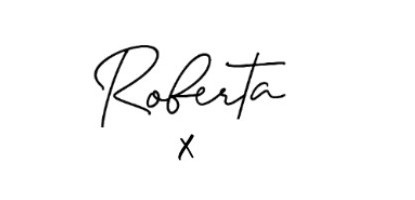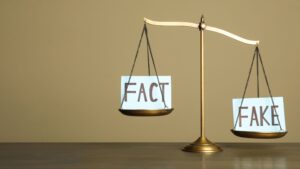Do you know the true cost and value of your wardrobe? I don’t mean what it’s worth to you. I’m not talking about how sentimental each item is to you either. I’m talking about the true cost in terms of labour and resource. Should you know this? Why would you? When I started my sustainable wardrobe journey, I certainly didn’t know a lot about fast-fashion… it didn’t even occur to me to think about the true cost of a garment, how it was made, where, or by whom.
What does the true cost actually mean?
When I talk about the true cost, I’m not talking about what we pay at the checkout for the garment, as the cost of fashion has become so cheap, I think we all know that a £3.99 dress is considered cheap and not an accurate reflection of what a piece of clothing should cost. Somewhere along the lines ‘we’ the consumer have lost sight and an understanding of how our clothes are made and by whom. The out of sight mentality has enabled us to shop the high-street without a second thought. All we see is the final product hanging up in store, ready for us to simply buy and wear.
The true cost is a breakdown of what labour and resources go into making a product – it includes all the things we don’t see.
There are over 10-steps, that involve extensive natural resources, labour, time and skill… When we see the price of a product it has already been marked up by 100-200% by a fast fashion brand in order to make a profit. When we do the maths – it’s clear that the costs don’t add up. Even if we consider global outsourcing arrangements with suppliers (which means labour and materials can be purchased at lower price points) it still looks like someone somewhere is having to pick up the costs. It’s not us, it’s not the fashion brands we’re buying from, so who is it?
Sadly, it’s the suppliers, factories and garment workers that are trapped in a cycle that they cannot get out of. When we keep people living on wages that fall well beneath the standard living wage in any country, it keeps them in poverty and stuck in a fight for survival. Minimum wage is not the same as a living wage, which takes into account the cost of living and inflation. Many garment workers are paid below a minimum wage and they have no choice but to work overtime in order to survive.
Surely it shouldn’t be these people that are paying for our cheap clothes?
The introduction of cheap clothes aka fast-fashion
The introduction of fast fashion brands in the 1990s paved the way for cheaper clothes. It was the original high-street brands like H&M, Forever 21 and Zara leading the way and blurring the lines of the true cost of our clothing. These brands created trendy, affordable clothing and they quickly turned around new styles, with shorter delays from runways to wearable looks sold at accessible price points.
Fast fashion has always focused on rapid production, low-cost manufacturing, and frequent turnover of inventory to keep up with the ever-changing fashion trends. Many of these fast fashion brands were the ones who started the trend of using the economy of scale strategies to drive down the cost of labor and materials in order to maximise their profits. While these strategies can be economically beneficial for the brand, they can have severe ethical implications for suppliers and garment workers who are forced to cut corners.
The introduction of even cheaper and disposable fashion – aka ultra-fast-fashion
Ultra-fast fashion, commonly referred to as “fast fashion on steroids,” emerged in the 2000s. It is closely connected to the rise of use of the internet and the online shopping boom. Ultra fast fashion is the same concept of fast fashion but taken to a new extreme. Ultra fast fashion works by intensifying the speed and frequency of production cycles. Brands like ASOS, Boohoo, and Pretty Little Thing are well known brands offer rapid turnaround times of new styles and use questionable aggressive marketing strategies to hook in online shoppers by selling ‘happiness’ and ‘acceptance’ through buying into trends.
The main difference between fast fashion and ultra fast fashion
The main difference between fast fashion and ultra-fast fashion is the speed in which new garments are produced, the turnaround time, and marketing techniques used:
- Ultra-fast fashion brands excel at quickly bringing new styles to market, sometimes even within a matter of days, catering to the “see-now, buy-now” mentality. Their reliance on social media marketing and influencer collaborations further fuels the rapid consumption of their products.
Ultra fast fashion brands can release new items daily. Their production processes are highly streamlined, and leverage digital technologies and data analysis, as a result, the number of items released on their websites can be significant, potentially reaching hundreds or even thousands. Planned obsolescence is a deliberate strategy used by manufacturers to ensure that their products have a limited lifespan or become outdated quickly, encouraging consumers to make repeat purchases. - Fast fashion brands employ the same tactics but produce less garments when compared to ultra-fast-fashion brands, they can release new lines multiple times per week. The main differentiator is the cost, fast fashion brands can still sell products marked up to over £100.
- Brands like Zara often offer a slightly higher price range compared to ultra-fast fashion brands. They focus on a combination of trend-driven designs, higher-quality materials, and faster production cycles. The slightly higher price point tends to reflect the perceived quality associated with the brand.
The Hidden Costs of our Clothes
Now we’ve discussed the hidden costs, it’s much clearer that we’re talking about the money that hasn’t been paid to groups of people. The true cost of our clothes is about the costs we don’t see that’s hidden throughout the supply-chain. We know that fast-fashion brands are cutting corners and outsourcing to countries where worker welfare isn’t enforced as much as it is here in the UK or the states (and even then exploitation still exists…) so who is paying for it? It comes down to a group of irrefutable victims: the farmers, the factory workers, garment workers and the planet.
The Rana Plaza Factory Collapse
On the 24th April 2013 the biggest tragedy in the textile industry we’ve ever seen took the lives of over 1138 and injured over 2,500 factory workers in the Rana Plaza factory when it collapsed. The global media did not pick up on this event and show it in real-time, much like many of the disasters we see shared on TV and social media today.
Fashion is thought to be the 2nd biggest polluter to our planet, behind oil, according to multiple sources online. Whilst it’s not clear just how damaging the fashion industry is due to its complexity, it is however known that it’s polluting and depelating our planet’s natural resources. I t is also a well documented fact that garment workers (a skilled profession) are some of the lowest paid people on the planet.
Cheap clothes come at a cost, regardless of where they made and sold, it still ends up being the poorest communities being exploited to make them and then live with the consequences of the environmental damage. That comes from dying materials and water pollution that creates, and how that has an impact on the health and wellbeing of local communities, nature and the eco-systems. This is just a fraction of the impact of fast and ultra-fast fashion.
The fashion industry has a very dark side to it and one that has lacked transparency and accountability across the supply chain. The story now, is at least a little different – when we fast forward from 2017 to today (2023) the amount of publicity that organisations like Fashion Revolution and Remake, Labour Behind the Label and Clean Clothes Campaign have generated have at least raised this topic into the mainstream consumer awareness.
The True Cost
“The True Cost” is a powerful and thought-provoking documentary that explores the social and environmental impact of the fashion industry. It was released in 2015, and the film delves into the hidden costs of the ethical implications of fast fashion, shedding light on the human rights abuses, environmental destruction, and health hazards associated with the fashion industry. It’s truly shocking and be warned, it’s a tear jerker – I sobbed when I watched this.
Directed by Andrew Morgan, “The True Cost” takes us on a journey across the globe, we get to see the hidden side of the industry. We get to go inside of garment factories and hear what industry experts, activists, and those working on the factory floor have to say. The documentary doesn’t shy away from highlighting the exploitation of garment workers, particularly in countries like Bangladesh, where low wages, unsafe working conditions, and long hours are known to be the norm.
Watching this film changed me, it shock me to my very core. It made me appreciate that every single item of clothing we buy has a story and when we purchase from the brands that make their clothes in these conditions it signal to them we are OK to let this go on.
There’s a lot of overwhelming information out there about ethical fashion, sustainable fashion, and the environmental disaster that lay ahead if we don’t take action soon, that it’s too easy to get paralysed, and often this is the case that. We get so conflicted that we actually end up doing nothing. But we must take action. It is our collective efforts that will drive change – and we must demand more from the brands that make our clothes – and from the governments that allow these brands to make huge profits through these exploitative systems.
Be aware, ask questions, start conversations
Unfortunately cheap clothes aka fast fashion and sustainable, ethical processes cannot co-exist with one another. Things are slowly changing, but sady what I once believed (back in 2017) which was with greater numbers the consumer voice, the conscious power, as a collective could drive change and demand that the clothing we wear from our all fashion brands be made fairly.
Sadly it has become widely known in the ethical fashion and sustainable fashion activism circles, that only a fast-tracked government enforcement can make the radical changes needed. Not only do we have mass exploitation within the fashion industry, we also have a huge waste problem, to put the scale of waste into perspective, the equivalent of a garbage truck of waste is going to landfill or incineration every minute.- (source: Ellen MacArthur Foundation)
Fashion is wonderful and it can and should make us feel good, but the question is how well does that sit with you knowing that other people and the planet and paying the hidden costs?
- Did you know the true cost of your fast-fashion clothes before reading this?
- How has reading this made you feel?
- Will you look into the ethical practices of a high-street brand before you shop with them again?
- Will you give up shopping directly from fast and ultra-fast fashion brands?
I’d love to hear your thoughts on ethical and sustainable fashion and if you’ve just recently started to change the way you shop and consume clothes. My intention is not to make anyone feel guilty for things that they didn’t know, however over the last few years I have realised that we need to feel uncomfortable and to tackle difficult topics if we we want to bring about meaningful change. Having these conversations with each other, our families, friends, work colleagues is a great starting point.
Let me know your thoughts, because I’m keen to help!

Join the #FashionRevolution
Ask your favourite brand #whomademyclothes – more info on how to do this here
Article first published in April 2017 and updated again in May 2023





